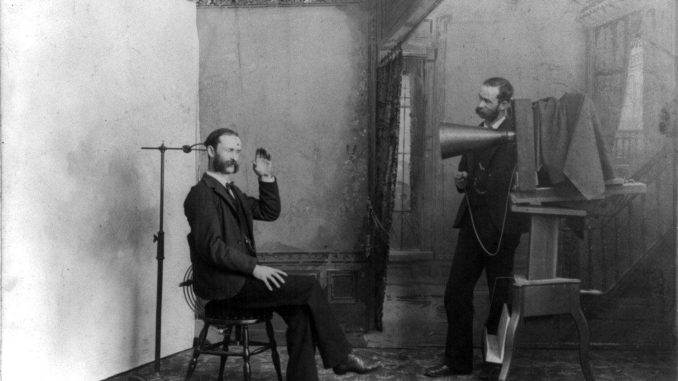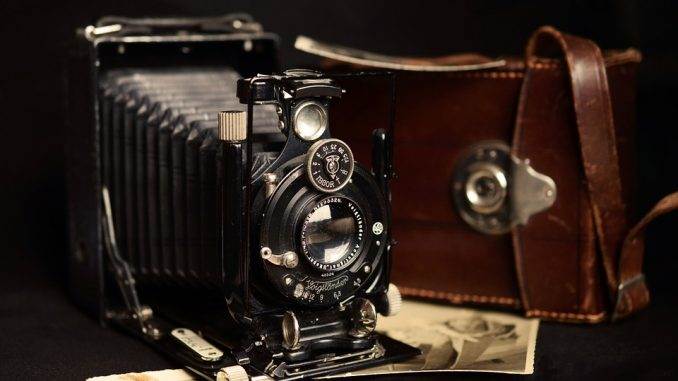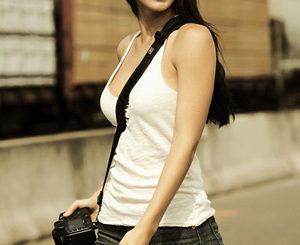Looking at the history of photography timeline, we can trace it back to two important phenomena. The first one is a property of light and way it interacts with a “camera obscura” – a dark chamber or room with a small hole in one wall, through which light can enter.
This light is reflected off of all objects outside of the room and projects an image on the opposite wall of the enclosure. This principle has been known for over two thousand years and the room can be considered the forerunner to the camera.
The second phenomenon was recorded by a professor of anatomy from Germany named Johann Heinrich Schulze in 1727, who proved that the darkening of silver salts was caused by light and not heat, as was believed for at least a century before him.
How these two known properties came together
These two things came together in the early 1800s and photography, as it is known today, began to come into being. In 1826, Nicéphore Niépce, an amateur inventor living in France, fitted a camera obscura with a pewter plate that he coated with a solution of silver salts and set it by the window of his estate for eight hours of exposure time. The result was the world’s very first photograph, which was given the very casual title of “View from the Window at Le Gras.”
After much experimentation, Niépce was able to get his exposure times down to a quick three hours. Possibly of more importance, was the fact that he was able to turn his pewter plates into printing plates that were used to print reproductions of his work.
About a decade later, in 1835, a scientist named William Henry Fox Talbot from the University of Cambridge had a bit of a problem. He was terrible at drawing and couldn’t quite seem to properly draw his scientific observations. Ever the scientist, he decided to solve his problem by creating a light sensitive paper to exactly capture the images that he couldn’t get down through traditional means.
He accomplished this by soaking the paper in solutions of sodium chloride and silver nitrate. This mixture created a paper with its fibers coated in silver chloride which darkened in light. This negative image was then pressed against another sheet of his coated paper and exposed to more light to create a positive image. With a little help from his friend Sir John Herschel, he began “fixing” his images with sodium thiosulfate and the modern dark room process was born.
The History Of Photography Timeline Reaches the USA
Several decades later, and across an ocean; exploration of the lands beyond the Great Plains in the United States led to an explosion of landscape photography after the civil war. Both railroad companies and the U.S. government routinely sent photographers with their respective teams to photograph and determine mineral deposits, rights of way, and other factors that would help them decided whether or not a location was right for settlement.
This practical use of photography for documentation led directly to a new form of documentary called “social documentation.”
A work called “Street Life in London” was published in 1877 by Adolphe Smith and John Thomson which included Thomson’s photographs. The images contained real life moments in the lives of London’s working class and told a story through pictures that words up until that point had failed to capture. The history of photography timeline gathers pace.
Many new styles and artistic endeavors would grow over the following years until two brothers, Auguste and Louis Lumière created the first practical color photography method. This process used a glass plate covered with grains of starch that had been dyed to act as primary color filters and black dust that blocked all unfiltered light in 1907.
This process elevated photography to never before seen heights of popularity and use for almost a hundred years until the advent of the first consumer digital camera in the 1980s. Following closely at its heels was the very first version of Adobe Photoshop in 1990.
By the end of the last decade, nearly all newspapers and magazines had transitioned from film to digital media. The effects of this world altering technology can be seen every single day through social media outlets and news agencies alike and its effects will continue to shape the world for many years to come.
Hope you enjoyed this short history of photography timeline






Leave a Reply